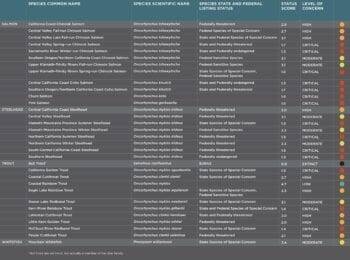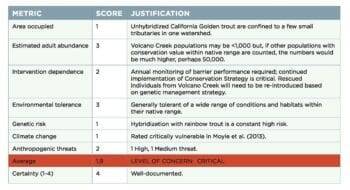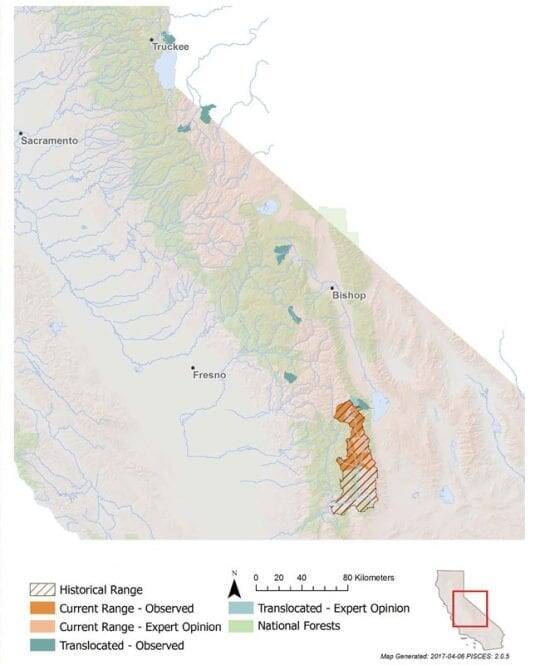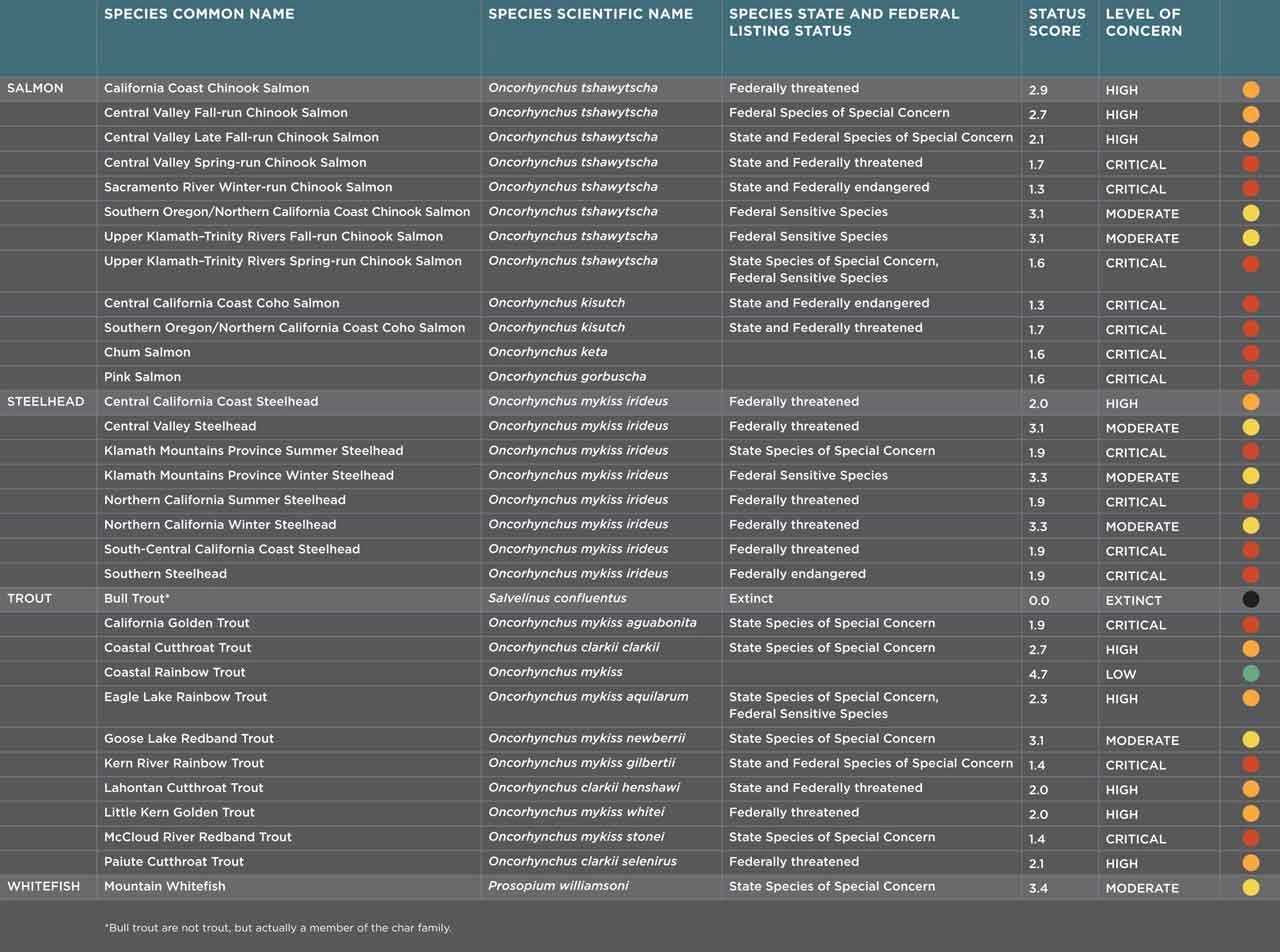Status of 32 kinds of salmon, steelhead, and trout
 The science-based report is clear - if we don't act, we risk losing our native salmon, steelhead and trout species.
The science-based report is clear - if we don't act, we risk losing our native salmon, steelhead and trout species.
45% of species are likely to be extinct in the next 50 years if present trends continue.
This includes 11 of 21 anadromous species (52%) and 3 of 10 of its inland species (30%). Under present conditions, 23 of the remaining 31 species (74%) are likely to be extinct in the next 100 years.
The SOS II report recognizes 32 distinct salmonids in California: one for each kind of native salmon, steelhead, and trout. Of these salmonids, 22 are endemic to California and only five are shared with neighboring states.
Each account has been distilled from comprehensive, peer-reviewed life history accounts and scoring rubrics prepared by Dr. Peter B. Moyle, Dr. Robert Lusardi, and Patrick Samuel, and will be published as Salmon, Steelhead, and Trout in California: Status of Emblematic Fishes, Second Edition. Readers interested in learning more about the diverse salmonid species in California, report methods, science underlying the scoring in the accounts, and obtaining references for further reading should review the full report.
For details of each species, click on the links below.
A glossary of terms used in the report can be found here.
The general approach taken in the analysis was to:
- Compile literature, administrative reports, survey data, interviews with species experts, and other information for all 32 kinds of salmon, steelhead, and trout.
- Produce detailed accounts on the biology, threats, and status for all species.
- Evaluate the status of each species using a set of standard criteria.
- Conduct an overall analysis of the status of California’s salmonids and of the factors affecting their status based on information summarized in the species accounts.
 The status of each extant species was determined using seven criteria (area occupied, estimated adult abundance, environmental tolerance, genetic risk, dependence on human intervention, anthropogenic threats, and climate change. Each criteria was then scored on a scale of 1.0 to 5.0, where 1.0 was the lowest possible score for an extant species and 5.0 was the highest score. The seven criteria were equally weighted and averaged to produce an overall score for each species.
The status of each extant species was determined using seven criteria (area occupied, estimated adult abundance, environmental tolerance, genetic risk, dependence on human intervention, anthropogenic threats, and climate change. Each criteria was then scored on a scale of 1.0 to 5.0, where 1.0 was the lowest possible score for an extant species and 5.0 was the highest score. The seven criteria were equally weighted and averaged to produce an overall score for each species.
Species scoring an average of 1.0 to 2.9 were regarded as being in serious danger of extinction within the next century, while species scoring higher were regarded as reasonably secure for the immediate future. The research team recognized that information for determining the status for some species was incomplete and uneven, and developed a “reliability index” to give a sense of the certainty associated with the status scoring determination. A reliability score of “one” indicated the status rating selected had low reliability because little peer- reviewed information was available, whereas a reliability score of “four” indicated the status rating selected was highly reliable, based on numerous accounts in the published literature and agency reports.
Scores Explained
To graphically represent the Level of Concern for each salmonid in California, a scoring bar is used to represent categories from 0.0 to 5.0
Maps Explained
Each species account includes a range map generated from PISCES (Figure 7), which is a software and data clearinghouse for the best- known ranges for native fishes of California, housed at the University of California, Davis Center for Watershed Sciences.


















 Dams block access to historical spawning and rearing habitats. Downstream, dams alter the timing, frequency, duration, magnitude, and rate of change of flows decreasing habitat quality and survival.
Dams block access to historical spawning and rearing habitats. Downstream, dams alter the timing, frequency, duration, magnitude, and rate of change of flows decreasing habitat quality and survival.